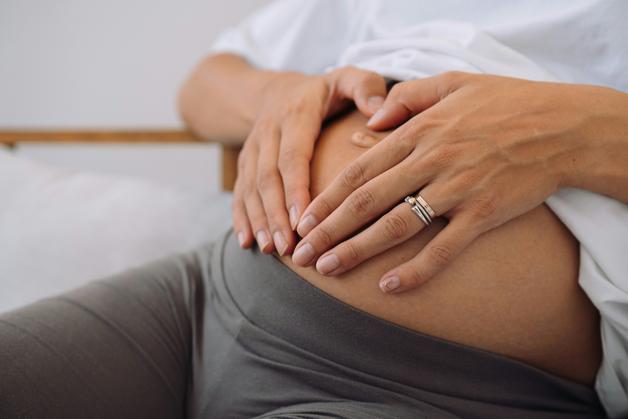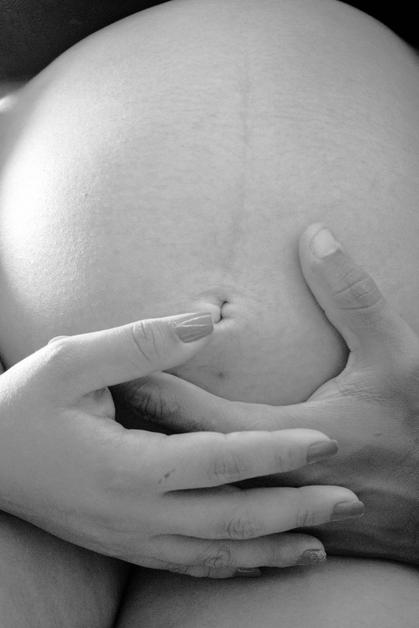From the very first flutter to the weight of late pregnancy, the experience of lower abdominal pain during pregnancy can catch even the most prepared parents off guard. A twinge here, a pinch there—is it a simple stretch or something more? The uncertainty, the questions, even flashes of anxiety, are all familiar in this adventure. Digestive discomforts, sudden cramps, unfamiliar tightness—sometimes benign, sometimes siren songs that call for vigilance. Parsing which signals to heed and which to soothe can seem daunting. Let’s break down what’s happening in your body, decipher typical sensations, flag warning signs, and discover practical strategies to ease discomfort and promote a sense of reassurance throughout pregnancy.
Understanding lower abdominal pain during pregnancy
The first thing to know? Lower abdominal pain during pregnancy is exceptionally common—statistically, it touches up to 70% of expecting mothers. Why does this pain arise so often? The uterus, which grows from the size of a small pear to a watermelon over several months, places a considerable demand on ligaments and supporting tissues. They stretch—sometimes gradually, sometimes sharply, especially with sudden movements or even a hearty sneeze—leading to what doctors call round ligament pain. Imagine the feeling: a brief, sometimes intense sting on one or both sides of your lower abdomen, typically fleeting, often surprising.
But the story doesn’t end there. Hormonal cascades, particularly the surge in progesterone, act directly on the digestive tract. This hormone, tasked with facilitating a gentle and stable environment for the baby, has a remarkable side effect: it relaxes smooth muscle, causing digestion to slow. Suddenly, gas, bloating, and that persistent constipation become part of daily reality. Underneath all this, the growing uterus presses on bowels and bladder alike, layering sensation upon sensation.
And yet, the challenge lies in distinguishing everyday aches (which are safe and expected) from pains that deserve urgent attention. Parents frequently worry: which discomforts can I ease at home, and which require a professional’s eye?
Benign causes of lower abdominal pain
Ligament stretching and physiological changes
Familiar to many as the “growing pains” of pregnancy, the gentle (or not-so-gentle) tugging and pulling you feel stems from ligaments adapting to the uterus’s ever-expanding presence. Particularly evident during the second trimester, round ligament pain is a result of muscle fibers and connective tissue being pulled in new directions. Walking briskly, rolling over in bed, or reaching for a dropped toy—each can spark this momentary flash of discomfort. Reassuringly, these sensations, though sometimes startling, are simply evidence that your body is accommodating its precious cargo.
Common digestive issues
Is your digestive system staging a protest? Don’t be surprised. Constipation and bloating are nearly universal among pregnant women. Gas accumulation isn’t just uncomfortable; it’s a natural byproduct of hormonal changes that calm the gut’s usual peristaltic rhythm. Simple concerted efforts—like boosting dietary fiber, hydrating consistently, moving gently—often bring swift relief. For many, these are transient annoyances, nothing more.
Braxton Hicks contractions
Enter the “practice contractions.” Often unpredictable and described as painless tightening or pressure, Braxton Hicks contractions serve as the uterus’s warmup act. Their irregular frequency and lack of increasing intensity distinguish them from true labor. Some women feel little more than a vague sense of stiffness; others, especially in the third trimester, report a rhythmic tightening that vanishes after rest or hydration.
Causes requiring vigilance
But what if lower abdominal pain during pregnancy takes an alarming turn? Amidst all the reassurance, it becomes vital to remain attentive to red flags.
Alarming symptoms
Pausing here: have you noticed any of these?
- Sudden, severe, or persistent lower abdominal pain
- Vaginal bleeding
- Fever
- Unusual or foul-smelling discharge
- Marked swelling (especially face or hands)
- Burning or painful urination
- Decreased or absent fetal movement
- Contractions before 37 weeks or marked pelvic pressure
Experiencing one or more of these alongside pain may point towards conditions like urinary tract infection, pre-eclampsia, placental abruption, or even ectopic pregnancy. Each of these scenarios affects both maternal well-being and fetal safety, requiring rapid evaluation.
Common obstetric emergencies
- Urinary tract infections (UTIs): The classic signs? Frequent urge to urinate coupled with burning, low-grade fever, and sometimes a dull ache lingering in the lower abdomen. UTIs are particularly pressing during pregnancy, as undetected infections can travel upwards, leading to kidney involvement or preterm contractions.
- Pre-eclampsia: A complex disorder often revealed by a triad: swelling (edema), headaches with visual changes, and pain (frequently upper abdominal or epigastric). Monitoring blood pressure and urine protein at each antenatal visit is essential.
- Ectopic pregnancy: Early pregnancy, sharp one-sided pain, possibly radiating to the shoulder, often accompanied by vaginal bleeding and dizziness—a true obstetric emergency.
- Miscarriage: Presents as cramping, generally bilateral, with vaginal bleeding and sometimes passage of tissue; most common before 12 weeks.
- Preterm labor: Rhythmic, persistent contractions, sometimes radiating to the back, below 37 weeks, possibly mixed with altered discharge—any suspicion warrants swift action.
Lower abdominal pain by trimester
Lower abdominal pain during pregnancy changes in frequency and significance based on gestational age—each trimester, a distinct landscape.
First trimester: Brief, mild twinges (sometimes called implantation pain) can appear just after implantation, close to a missed period. Because the risk of miscarriage peaks before 12 weeks, any accompanying bleeding or heavy cramping should not be minimized. Likewise, sharp, one-sided pain plus bleeding raises the specter of ectopic pregnancy.
Second trimester: The stage of ligament stretching. Here, round ligament pain is common, joined by constipation and Braxton Hicks contractions as the uterus ramps up its activity. Notably, an increase in urinary tract infections may occur as the expanding uterus compresses the bladder and ureters.
Third trimester: Practice contractions intensify. For some, lower abdominal pain during pregnancy signals nothing more than a bout of sturdy Braxton Hicks. But regular, progressive pains—especially with changes in discharge or increasing pelvic pressure—can foreshadow early labor. Never dismiss reduced fetal movement or intensifying pain.
Interpreting pain patterns and warning signs
Wondering what truly differentiates harmless discomfort from signals that can’t wait? Let’s break it down.
- Benign pain: Mild, intermittent, position-dependent, often subsiding with rest, warmth, or gentle movement. Digestive or ligament pain regularly fits this description.
- Alarming pain: Severe, persistent, or escalating, often with secondary signs—bleeding, fever, faintness, or altered fetal activity.
Pain radiating to the back or shoulders, especially if combined with bleeding or changes in discharge, should always be checked without delay. Similarly, pain linked to fever, chills, or burning upon urination ought to prompt swift consultation. Early intervention frequently protects both mother and baby.
Differential diagnosis: distinguishing the causes
| Condition | Typical Pain | Associated Features | Response |
|---|---|---|---|
| Round ligament pain | Sharp, fleeting, side-dominant | Triggered by movement, no bleeding | Reassuring |
| UTI | Persistent, crampy, suprapubic | Burning urination, frequency, sometimes fever | Medical review |
| Ectopic pregnancy | Severe, unilateral, may refer to shoulder | Bleeding, dizziness, pallor, hemodynamic instability | Emergency |
| Miscarriage | Crampy, often bilateral | Bleeding, tissue passage | Urgent evaluation |
| Preterm labor | Rhythmic, lower back/abdominal | <37 weeks, pressure, discharge | Emergency |
| Placental abruption | Sudden, severe, constant | Bleeding, uterine tenderness, fetal changes | Emergency |
| Appendicitis | Progressive, right lower quadrant | Nausea, vomiting, rebound tenderness | Emergency surgery |
Potential risks and complications
Let’s be direct—ignoring lower abdominal pain during pregnancy isn’t harmless. While most cases resolve with rest and home remedies, untreated severe pain may predict a miscarriage, infection extension to the kidneys (pyelonephritis), preterm labor, or even, in rare cases, placental abruption. Long-term, there’s also the potential for chronic pelvic pain or, following certain emergencies, impact on future fertility. Psychological toll? Not negligible. Anxiety, disturbed sleep, and parental tension can amplify even mild discomfort. Fortunately, routine care and swift response help avert most adverse outcomes.
Modern tools for diagnosis and evaluation
How do clinicians unravel the cause when faced with lower abdominal pain during pregnancy? The detective work starts with a structured interview: when did the pain start, what makes it better or worse, are there associated symptoms (bleeding, fever, urinary changes)? Physical exams target tenderness, uterine tone, and fetal well-being.
Further investigations might include:
- Urinalysis and urine culture: To exclude urinary tract infection.
- Bloodwork: Screens for infection, anemia, and hormone levels corresponding to gestational age.
- Ultrasound: Pelvic or transvaginal, essential for localizing the pregnancy and identifying possible pathology.
- MRI: Reserved for complex cases—especially appendicitis—because it avoids radiation risk.
Management and relief of mild pain
For many, daily management is the real question. How to cope practically with lower abdominal pain during pregnancy?
Physical comfort and lifestyle adjustments
- Rest as needed: Alternating positions, side sleeping with a pillow under the belly, and avoiding heavy lifting are tried-and-true approaches.
- Gentle movement: Regular short walks, stretching, and prenatal yoga keep circulation going and muscles limber.
- Warmth: A warm—not too hot—bath or a soft, warm compress can relax tight muscles and melt away mild pain.
Digestive support
- Diet rich in fiber: Whole grains, fruits, vegetables—these are your functional allies in fighting constipation.
- Hydration: Aim for 10–12 glasses of water per day. Not only does this deter cramps and sluggish digestion, but it also helps keep the bladder well-cleansed.
- Bladder habits: Answer nature’s call without delay; lingering can increase infection risk.
- Cotton underwear and attentive hygiene: These small details are highly effective in preventing urinary tract infections.
Medication
If pain lingers, only reach for medications explicitly okayed by your healthcare provider. For most, acetaminophen (paracetamol) is the go-to for pain relief—NSAIDs like ibuprofen, however, are generally avoided, especially after the midpoint of pregnancy.
Emotional well-being
Never underestimate the impact of emotional resilience—rituals like mindful breathing, gentle self-massage, or simply checking in with yourself and your baby can transform even a difficult day.
When to seek medical care
A crucial reminder: don’t hesitate. If you experience any of the following with lower abdominal pain during pregnancy:
- Severe, incessant, or sudden pain
- Vaginal bleeding or noticeable spotting
- Fever, chills, or pain on urination
- Abnormal discharge
- Dizziness, lightheadedness, or sudden fatigue
- Noticeably reduced fetal movement
- Regular contractions or pelvic pressure before term
Prompt action protects not only immediate well-being but can be decisive for your baby’s health and safety.
Ongoing prenatal monitoring: your shield
Every antenatal appointment is a powerful opportunity—screening for worrisome developments, explaining odd sensations, and reaffirming that every experience matters, no matter how minor it may seem. Open, honest exchange with your practitioner builds confidence and can transform worry into productive partnership.
Debunking myths and misconceptions
Let’s step into an honest conversation: not all lower abdominal pain during pregnancy portends disaster. Intermittent, mild pain almost always corresponds to ordinary physical adaptation. A cramp does not decree miscarriage; a sharp twinge isn’t, by default, ectopic pregnancy. Single-sided pain is not always sinister. Still, vigilance is healthy—progression or accompanying alarming symptoms deserve immediate review. Equally, gentle activity isn’t dangerous. In fact, movement (carefully moderated by your provider’s advice) can reduce discomfort and benefit both mother and developing baby.
Maternal and fetal impact
For most, lower abdominal pain during pregnancy is an uninvited but fleeting guest, more a source of curiosity and adaptation than actual harm. Yet unmanaged severe pain can trigger stress, disrupt sleep, and, rarely, threaten either mother or child if complications evolve unchecked. Early, appropriate interventions reliably improve both comfort and outcomes. And remember, professional support is readily available—addressing concerns early offers peace of mind and genuine protection.
Key takeaways
- Lower abdominal pain during pregnancy often reflects normal adaptation, though persistence, severity, or associated symptoms require rapid medical attention.
- Home remedies—hydration, fiber-rich nutrition, warmth, gentle activity, and appropriate rest—are effective allies.
- Warning signs like bleeding, fever, urinary changes, or reduced fetal movement are non-negotiable indicators to seek evaluation.
- Regular antenatal visits and honest dialogue with your provider form the backbone of a healthy, reassuring pregnancy journey.
- Reliable resources are available for support—consider downloading the Heloa app for tailored advice and free child health questionnaires.
Listening to your body’s signals, asking questions without hesitation, and using expert-backed resources can help transform uncertainty about lower abdominal pain during pregnancy into calm, informed decision-making that safeguards both you and your baby.
Questions Parents Ask
Can lower abdominal pain during pregnancy affect the baby?
It’s natural to worry about your baby’s well-being when you experience discomfort. Most of the time, mild lower abdominal pain during pregnancy is harmless and relates to your body’s normal adaptation. These gentle aches, often linked to stretching or digestive changes, do not impact your baby’s development. However, if pain becomes intense, doesn’t improve, or is associated with symptoms like bleeding or fever, it is important to contact a healthcare professional. Ensuring both your comfort and your baby’s safety remains essential.
Is it normal to have lower abdominal pain in early pregnancy without bleeding?
Many parents notice mild twinges or cramps in early pregnancy, and this is usually a normal response to hormonal shifts and uterine growth. When there’s no bleeding or other unusual symptoms, these sensations are generally nothing to worry about. Each person’s body adapts in its own way, and some level of discomfort can be expected. However, if the pain is strong, lasts a long time, or if there are any additional symptoms, don’t hesitate to reach out for advice—being cautious is always welcome.
How long does lower abdominal pain last during pregnancy?
The duration of lower abdominal pain can vary a lot from one pregnancy to another. Some people experience quick, sharp pains that pass within minutes, while others feel a recurring discomfort that comes and goes over several weeks. Pain linked to physical changes, like ligament stretching or digestion, tends to improve with gentle movement or rest. If you’re unsure about what you’re feeling, or if the discomfort is ongoing and unsettling, sharing your experience with a healthcare provider is a wise step. You deserve reassurance and support every step of the way.

Further reading:





